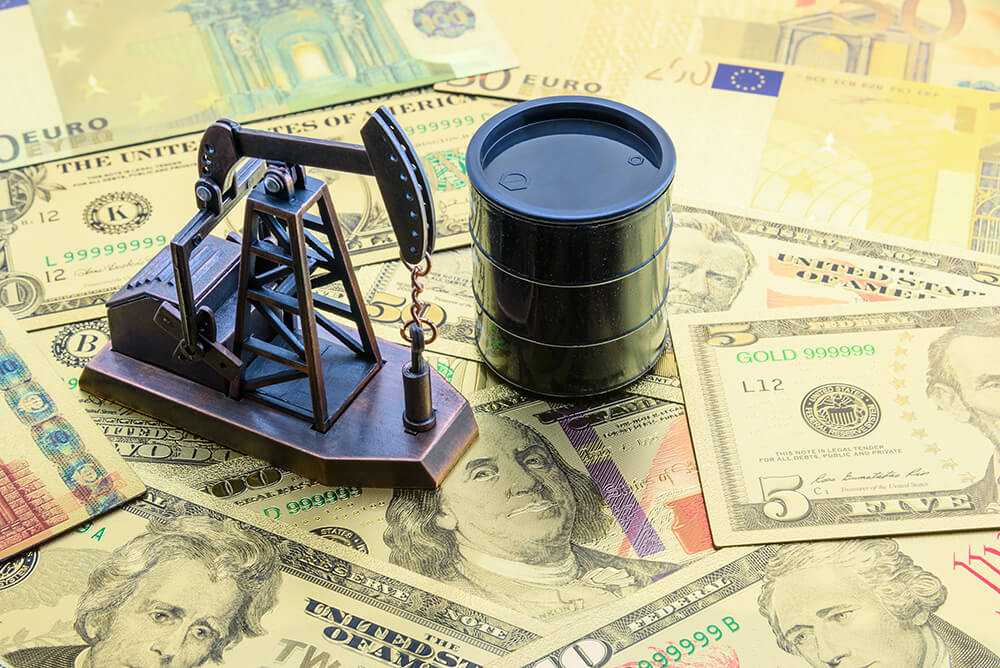The Denver Broncos were behind by a touchdown with less than six minutes to go on a cold January day in Cleveland in 1987. The ball was on their own 2-yard line, meaning they would have to travel almost the entire length of the field just to tie the score. At stake was nothing less than a trip to the Super Bowl.
It was from this endzone huddle that emerged what has become an infamous battle cry for anyone facing daunting odds: “We’ve got ‘em right where we want ‘em,” proclaimed guard Keith Bishop.
And, sure enough, the Broncos proceeded to methodically march 98 yards down the field to score the touchdown that would send the match into overtime, where a field goal ultimately won the game.
If you’re an investor considering a romp through the oil patch, you might well be thinking the same thing about shares of oil and gas companies: We’ve got ‘em right where we want ‘em, which is another way of saying that prices have declined to levels where they’re ripe for the picking. That, at least, is the case being made by contributor Tom Carr in the article below.
— Bob Bogda, Editor
P.S. Like what you see? Don’t like what you see? Let me know.

Is it time to buy oil and gas stocks?
You’ve seen the headlines. “Crude oil drops to lowest in a month as global recovery stalls.” “Oil continues to fall over persistent fuel demand recovery worries.” Heck, the price of crude can’t even catch a break from a busy hurricane season in the Gulf.
The headwinds oil and oil companies are facing now are legion. These include:
- The ultra-slow demand, globally, for energy this year due to the Covid-19 lockdowns, and which continues to be slow given all the “second wave” fears affecting local economies.
- In a move to become energy independent, the United States has been ramping up production in recent years from shale fields – very successfully – which continues to keep a lid on prices.
- Russia, seemingly to hurt U.S. shale oil production, has been using sophisticated hedging techniques on oil futures to keep oil prices artificially low.
- And unless you’ve been living in a cave for a year, you know that we are in the springtime of a huge electric car boom, with sales of Teslas and other EVs flying sky high. This, of course, has only served to reduce the demand for refined oil products even further.
But wait, there’s more! OPEC did launch a serious production-cut campaign earlier this year. The move was largely responsible for the 100% rally in the price of crude we saw off the April lows – the lowest we’ve seen since 1999 – but then there were major compliance issues and so OPEC decided to make the cuts “voluntary.” Guess what? No one volunteered. So by July, OPEC was back to pre-Covid levels of production.
Even the impact of stimulus money from Congress, which was expected to spur economic activity and therefore energy demand, fizzled out this month as U.S. stockpiles returned to early summer levels. So here we are, back to seeing builds instead of draws in the weekly U.S. Energy Information Administration (EIA) reports, and back to falling oil prices, cheap gas, and lower energy bills.
Moreover, oil and gas stocks in the S&P 500’s energy sector are lower than a year ago by a whopping 45%.
No one knows how long the oil glut will last. It is certainly true that headwinds like these do not dissipate quickly. But it is also true that the United States, and much of the world, remains oil-dependent, that oil is still the cheapest energy available (by a long shot), and that it is not as environmentally toxic as it used to be. Also, or so the thinking goes, once we get past all the lockdowns and start hitting the road again, a massive amount of pent-up demand will help push the price of crude to historic norms.
Now, I’m not the only one thinking this. One of the ways I identify trading opportunities is by monitoring unusual option flow. Lately, I’ve been seeing some interesting moves by big money players in the major oil companies. This week especially, there has been unusually large call volume in big-cap oil such as American companies Exxon Mobile (XOM), Chevron (CVX), Marathon Petroleum (MPC), and Canada’s Suncor Energy (SU) – an indication that the “smart money” expects share prices to rise.
SPONSORSHIP
The Most Important Chart You’ll See Today
For a short time…
You can receive access to one of the most successful wealth secrets in our business.
If you’ve lost some income as a result of what’s going on in the markets…
It’s one of the only ways we know to get paid instantly, a simple technique you can use on your phone or laptop at home.
Hedge funds are net buyers of oil stocks as well. Even as hedgies cut exposure to restaurants, retail, and airlines, several prominent managers went value-hunting in the energy patch last quarter. Forbes tells us that as of late May, hedge funds had gotten overweight the energy sector. And according to a Reuters report, hot hedge fund Balyasny Asset Management added 2.9 million shares in oil and natural gas company Noble Energy (NBL) in the second quarter, raising its stake by a massive 565%. Cinctive Capital Management, a new fund that employs teams of traders, increased its position in Noble by 300%. Both were great bets: Noble’s stock has surged 89% since March 23. Cinctive also bought into Valero Energy (VLO), whose stock price has jumped 85% since March 23.
So, what is it that the hedgies are seeing here? For one, they’ve certainly noted that demand for oil products has bottomed. As shelter-in-place orders have eased here in the United States, more people are using their cars to go to work and places of leisure. The same thing is happening abroad. Oil demand in China has now nearly recovered to year-ago levels. The same is true in India. Looking at the global trends as countries ease their lock-down measures, the IEA expects a significant boost in demand to begin toward the end of this year.
Another solid reason to be bullish on the oil companies is that, for at least the biggest players, they are sitting on piles of cash. British Petroleum (BP) has $33 billion in cash, Exxon has $12 billion and Chevron has $7 billion. These are huge hoards. Compared with Apple, Inc. (AAPL), e.g., on a dollar-for-dollar basis, Chevron has 160% the cash reserve of its larger tech cousin. Here’s the thing: not only will this allow these players to borrow at lower costs, it also allows them to hedge falling prices through the futures market. When oil rallied over $30 per barrel last August, oil companies locked in that price with all that cash by buying puts.
All that cash also allows big oil to pay their investors quite handsomely in the form of dividends. BP pays out 6.4%, CVX pays 6.5%. Exxon, which has increased its dividend for 37 consecutive years, is currently paying a whopping 9.2% annually. These measures of safety make big-cap oil an attractive investment for investors looking for both value and income.
Action to Take: I would not recommend buying any of the individual names in the space, although the big three just mentioned are at the top of my list, along with The Williams Companies (WMB). Rather, I prefer to take a broad sector approach by buying the VanEck Vectors Oil Services ETF (OIH). The fund caps expense fees at just 0.35% and shares currently yield 4.5%. I like the fund up to a price of $121, with a view to holding until $250 or the end of 2021, whichever comes first.
SPONSORSHIP
The #1 Stock for the Electric Car Boom
Former Wall Street whiz kid says there’s one small company at the epicenter of the $3 TRILLION electric car boom… and very few people are paying attention to it right now.








